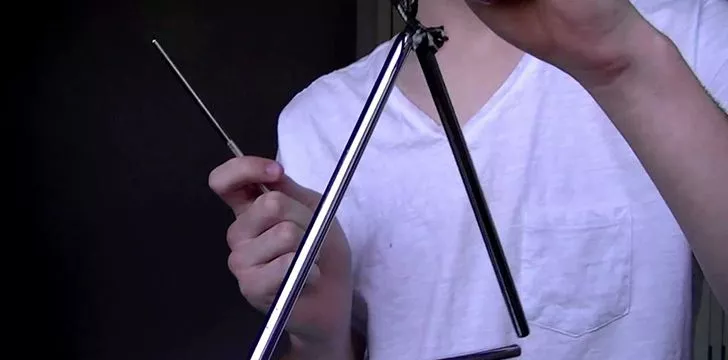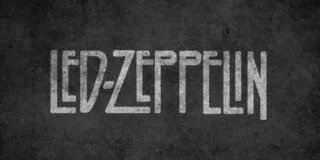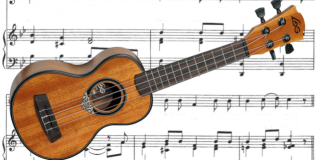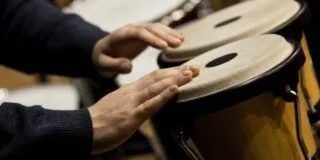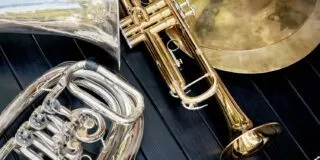The triangle percussion instrument is probably one of the least thought about instruments in terms of training involved and coolness levels. After all, who can’t play the triangle?
Unfortunately for professional triangle players, this actually makes it more stressful to play the triangle than other, more prestigious instruments (like the cello or a nice complicated bassoon).
I mean, would you want to be the guy who got the triangle part of the symphony wrong?
Triangles haven’t always been triangle.
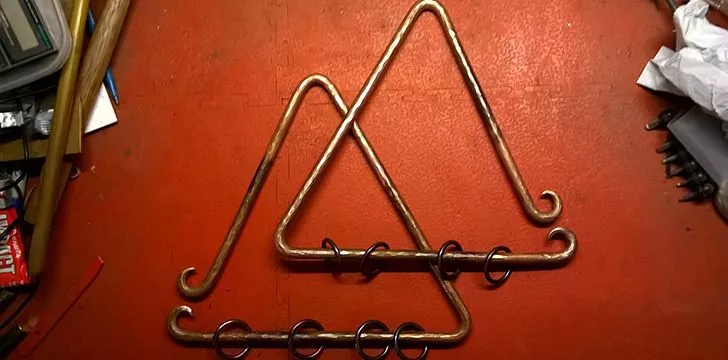
So, where did the triangle come from? The answer isn’t very clear, but the earliest triangles depicted in historical documents date back to the 10th Century manuscript.
Often the early triangles were trapezoid in shape and the ones that were triangle were closer to an isosceles triangle than to the equilateral triangle we all know and ignore today.
Unlike modern triangles, which have an open bottom corner, ancient triangles were one continuous triangle of metal, often with additional metal rings threaded through the bottom bar.
Triangles have featured heavily in religious ceremonies and artwork throughout Europe since the 14th Century.
There is even artwork depicting angels playing the triangle whilst singing.
The Triangle is an orchestral instrument because 18th Century composers copied the Turkish military.

The triangle is great when you’re in elementary school – just hit it occasionally and go back to daydreaming! But how exactly did this simple, three-sided shape earn its place in the prestigious pantheon of orchestral instruments?
In the 1700’s, the Turkish royal family had an elite corps of bodyguards called the Janissaries.
They were known for playing Janissary music, which heavily featured percussion instruments of all kinds, from drums to bells.
Basically, if you could hit it then the Janissaries played it.
In 1720, the Polish ruler Augustus II “adopted” Janissary music for his own army, which effectively introduced the triangle to the whole of Europe.
Composers such as Mozart and Beethoven began to incorporate the triangle, albeit sparingly, into their compositions.
The Triangle took nearly 100 years to become a popular orchestral instrument.
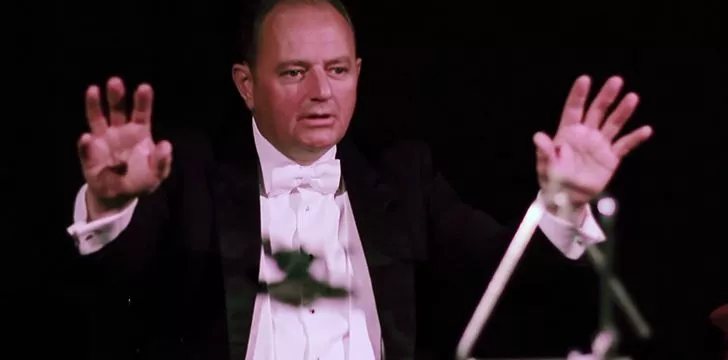
The first prominent use of a triangle in European classical music dates back to February 17, 1855.
The humble triangle got its own solo in Franz Liszt’s Piano Concerto No. 1 in E-flat major.
This triangle solo caused much ridicule from the critics, with one critic referring to the piece of music as the “Triangle Concerto,” which I’m sure he found very funny.
Triangles are an easy instrument, so the pieces written for them are often very complex.
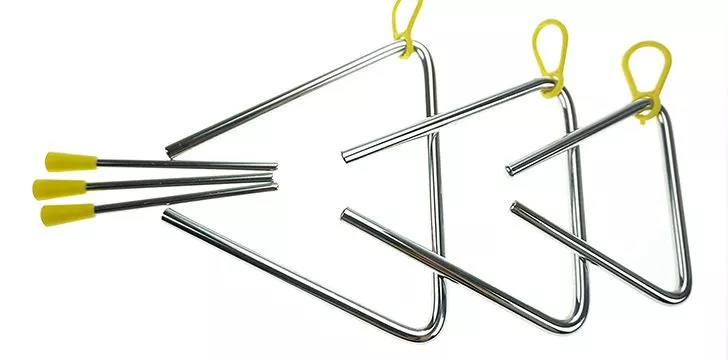
Anyone can hit a triangle with a stick. Most of the beaters are attached to the triangle, so you don’t even have to worry about losing your sticks like drummers do.
However, triangles are still musical instruments, and as such they have a technique to perfect and that can often take a lifetime.
George Plimpton, a journalist known for taking part in every profession he wrote about, said that playing the triangle for the New York Philharmonic was scariest thing he ever did.
And this is a guy who played for the Detroit Lions in the NFL, took part in the PGA Tour, and even trained as a goalie for the NHL, all as an amateur.
There are pieces of music that call for the triangle to be strung up on a stand while the triangle player uses 2 beaters.
As well as this, there are a variety of beaters and straps to use on the triangle, all of which affect tone, volume, and clarity of the sound produced.
Sometimes the triangle is suspended from fishing line, to ensure that the tone produced is as clear as possible.
Other times, mostly in Latin and Cajun folk music, the triangle is hung from the hand in order to dampen specific notes in specific ways.
People are still using the Triangle in contemporary music.
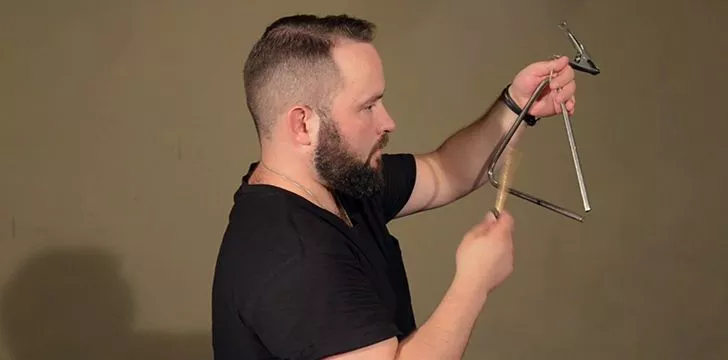
A lot of the facts about the triangle are firmly rooted in the history books and you may think that people who play the triangle wear only suits.
But did you know that in 2008 the Foo Fighters had their percussionist Drew Hester play triangle solos on their 2008 tour?
The triangle is a simple instrument that produces a clear, piercing sound that can cut through the sound of an entire orchestra.
It is very easy to ignore this humble twisted rod of steel, but hopefully I have inspired you to pay a little closer attention to a simple sounding percussion instrument.
If nothing else, you can always add “Professional Triangle Player” to the list of jobs you’ll never do!
